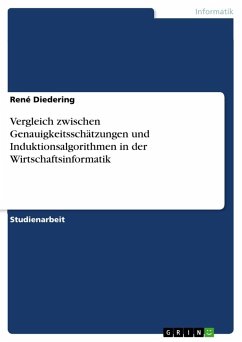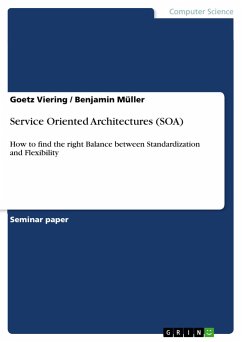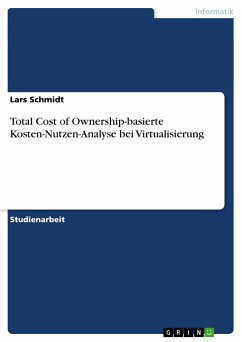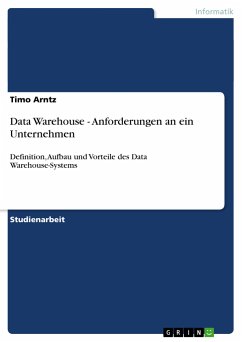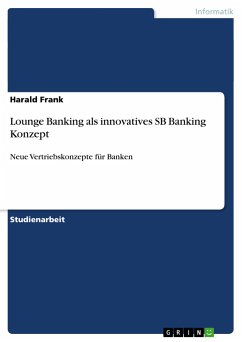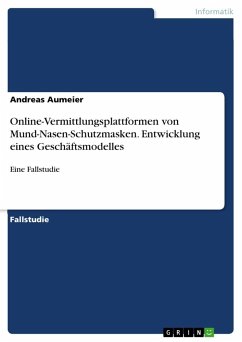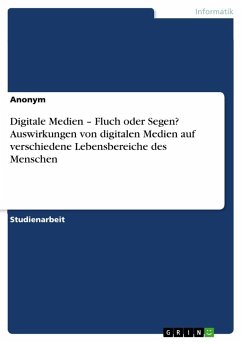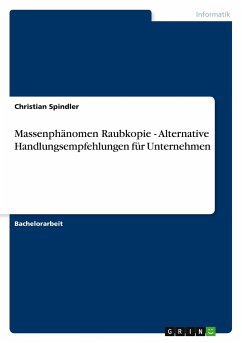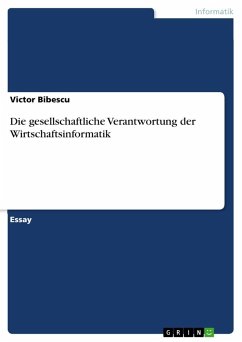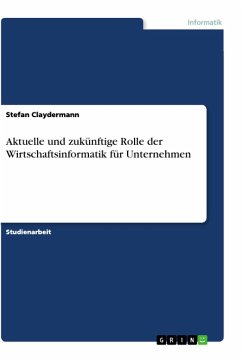
Vergleich des Risikoverständnisses in den Disziplinen Wirtschaftsinformatik und Soziologie
Comparison of the risk understanding in the disciplines Information Systems and Sociology

PAYBACK Punkte
0 °P sammeln!
Bachelor Thesis from the year 2010 in the subject Computer Science - Commercial Information Technology, grade: 1,3, Technical University of Munich, language: English, abstract: In the sociology of risk, there are two different fields of research: risk objectivism and risk constructivism. The former deals with the actual increase of danger due to greater pressures through new technologies. Risk constructivism deals with the conception, perception and evaluation of risks in the social environment. Beck is a representative of objectivism. In his view, risk is produced by modern society itself. Ne...
Bachelor Thesis from the year 2010 in the subject Computer Science - Commercial Information Technology, grade: 1,3, Technical University of Munich, language: English, abstract: In the sociology of risk, there are two different fields of research: risk objectivism and risk constructivism. The former deals with the actual increase of danger due to greater pressures through new technologies. Risk constructivism deals with the conception, perception and evaluation of risks in the social environment. Beck is a representative of objectivism. In his view, risk is produced by modern society itself. New risks are constantly emerging as a result of technological progress. This means that humans create their own risk environment and must now deal with it. Luhmann sees risk from a systems theory perspective. A social system is a process of social interactions between acting entities. According to Luhmann, risk only arises when there is communication about it. Furthermore, Luhmann sees the distinction between risk and safety as misleading and illusory. He proposes the concept of risk and danger. Douglas and Wildavsky represent neither an objective nor constructive notion of risk. They see risk as a collective construct that is shaped by the social context of the respective actors. The perception of risk is a social process. With the help of the grid-group model, a society can be divided into four cultural forms with specific risk-related characteristics. The cultural forms are individualism, hierarchy, fatalism and egalitarianism. The understanding of risk in information systems is analyzed based on software project management and IT security. The challenge in software development is to find the best position between costs and performances in order to satisfy both internal and external stakeholders. This is attempted with four approaches to risk management: risk checklists, an analysis framework, process models and risk response strategies. In this connection, it's worth noting that risks are perceived differently. Different risk assessments arise in various countries and different management levels. In the area of IT security, the ranking of risks varies in different countries. This difference in ranking can be explained with the help of the technology threat avoidance theory. The evaluation of the consequences and information plays a role in countering the threat. There are also two sociological components. The first is the informal influence. Informal is the quantity of information that makes its environment available. The second, normative influence deals with social norms and demands that are used to counter the risk.




